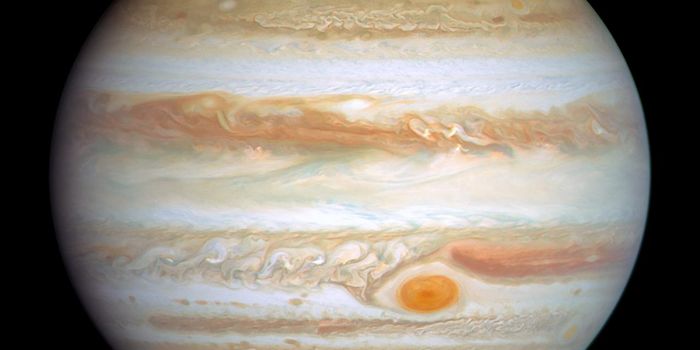Understanding the Fate of Stars Consumed by Black Holes
If a star gets too close to a supermassive black hole, the forces exerted on the star tear it to shreds, generating a huge flare of radiation as the star descends into the black hole. These 'tidal disruption events' or TDEs can teach us more about how supermassive black holes at the centers of galaxies consume what's near them, and what happens to that stellar debris.
Reporting in the Astrophysical Journal, scientists have now used TDE data to show that as a star is broken apart, the fragments rotate around the black hole, forming what's called an accretion disk. The efficient formation of accretion disks during TDEs has been debated; this may help settle the debate. In the video above, a computer simulation illustrates what stellar debris might look like as it forms an eccentric accretion disk and spirals into a black hole. Another simulation is shown below.
"In classical theory, the TDE flare is powered by an accretion disk, producing x-rays from the inner region where hot gas spirals into the black hole," said the first author of the study Tiara Hung, a postdoctoral researcher at the University of California Santa Cruz (UCSC). "But for most TDEs, we don't see x-rays; they mostly shine in the ultraviolet and optical wavelengths, so it was suggested that instead of a disk, we're seeing emissions from the collision of stellar debris streams."
"This is the first solid confirmation that accretion disks form in these events, even when we don't see x-rays," added study co-author Enrico Ramirez-Ruiz, professor of astronomy and astrophysics at UCSC. "The region close to the black hole is obscured by an optically thick wind, so we don't see the x-ray emissions, but we do see optical light from an extended elliptical disk."
The data for this work was collected as a TDE was monitored with several telescopes from 2018 to 2019. An analysis revealed that the disk had formed relatively quickly, only weeks after the star had been disrupted.
Sources: AAAS/Eurekalert! via University of California - Santa Cruz, Astrophysical Journal








